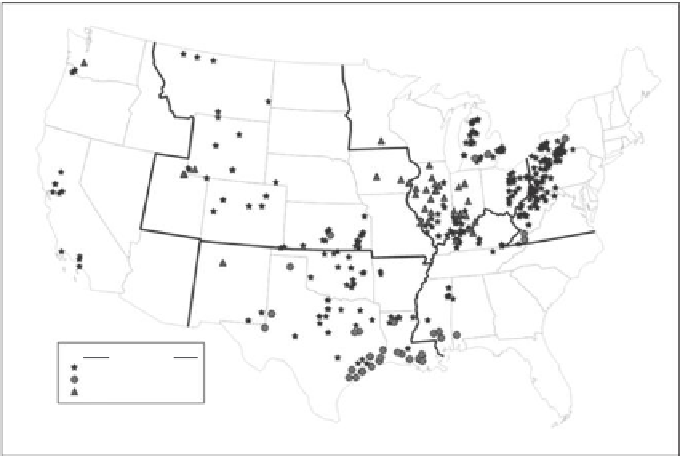Environmental Engineering Reference
In-Depth Information
Central
Midwest
Northeast
Western
Southeast
Type Sites
= Depleted Reservoir 326
= Salt Cavern 31
= Aquifer
Southwest
43
FIGURE 8.1
Locations and types of underground storage fields in the United States. (From U.S. Department
of Energy.)
The industry recognized that new storage would be needed to serve these
regions with weather-sensitive loads. Without new storage capabilities, the
pipeline sizes would exceed the abilities of the steel industry of the 1950s
to manufacture them. The alternative of laying numerous small lines was
determined to be cost prohibitive.
From 1950 to 1965, the number of new gas storage fields increased dra-
matically. Aquifer storage was developed in the Midwest to serve the
large Greater Chicago market; deeper depleted gas fields were developed
in Pennsylvania, Ohio, and West Virginia and the first bedded salt storage
cavern was developed in Michigan. The first storage cavern in a salt dome
opened in Mississippi in 1970 as a back-up supply needed after hurricanes.
Today, the United States, Canada, and Europe house approximately 600 gas
storage facilities (Figure 8.2).
Gas storage initially served as a single-turn baseload providing pipeline
flexibility and users were charged for the service. The passage of the 1978
Natural Gas Policy Act, providing for escalating and, in some cases, incen-
tive wellhead pricing, eventually allowed the industry to overcome a supply
shortfall with very expensive deregulated intrastate gas. In recent years,
interest in and demand for new storage have increased due to multiple fac-
tors, including the Federal Energy Regulatory Commission (FERC) Order
636 promulgating the end of most traditional pipeline merchant services.
The result moved pipeline activity from suppliers to transporters, making

